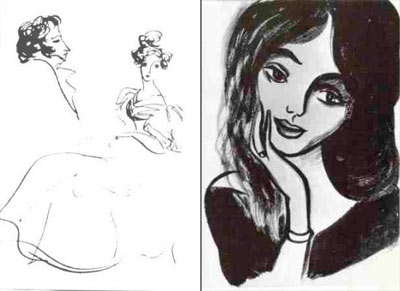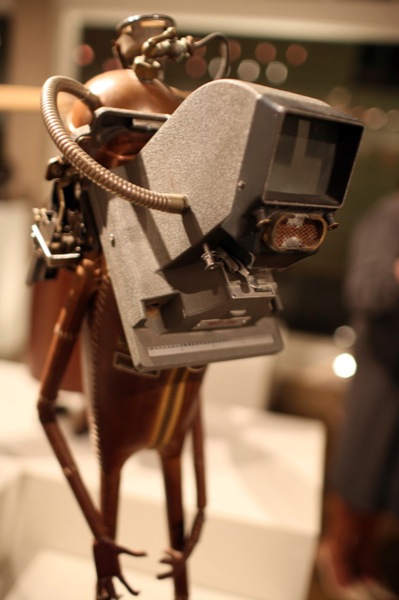
Left: Ballerina. Right: Apollo and Daphne.
She died before I was ever born, but she’s been with me all my life. Nadya Rusheva was only 17 when she succumbed to a brain hemorrhage in Moscow. She left behind ten thousand drawings – a fragile, incomplete catalogue of her teenage fascinations with Greek myths, Pushkin’s life, Bulgakov, Byron’s poems, War and Peace, and other bits and pieces from history and literature.

L: Pushkin and Goncherova. R: The Transfiguration of Margarita
She once said that she lived the lives of the people she drew. Her drawings are simple, impulsive – some might even say they’re amateurish – but there’s something to them, a spark, a keen insight, a visible love. For example, when she illustrated The Master and Margarita (which Zo and I blogged about), it turned out that her drawings of Margarita bore an eerie resemblance to Bulgakov’s wife – whom Rusheva had never met.

L: Saying good-bye to Fox. R: Self-portrait.
She’s virtually unknown in the West – not even a real Wikipedia page – but in Russia, she’s beloved by generations for her combination of tragedy, whimsy, youth and the adult-like insight that sometimes appeared in her work. Young fans still visit her museum and leave behind poems and drawings. On her Livejournal fan community, people swap scans of her drawings and write dedications. And a new film about her called “Secret Signs” recently came out in Russia.
Rusheva was born in 1952 in Mongolia to a Bolshoi theater designer and a ballerina (both of whom, I believe, are still alive today), and died in 1969. Some say that she was exploited to make the Soviet education system look good. I found two translations of the same document that claim that, upon being discovered, Rusheva was forced to produce artwork at a grueling pace so that the regime could hold her up as a paragon of Communist artistic training. One translation outright states that she was worked to death, but other (and better translation) doesn’t imply this. I’d never heard this before, even though I knew her work since childhood, thanks to my parents’ immense book collection. I could see it being true – despite the irony that Master and Margarita, one of her favorite books to illustrate, was banned when she drew it.
After the jump, my favorite Rusheva drawings (there’s lots!) and more.























